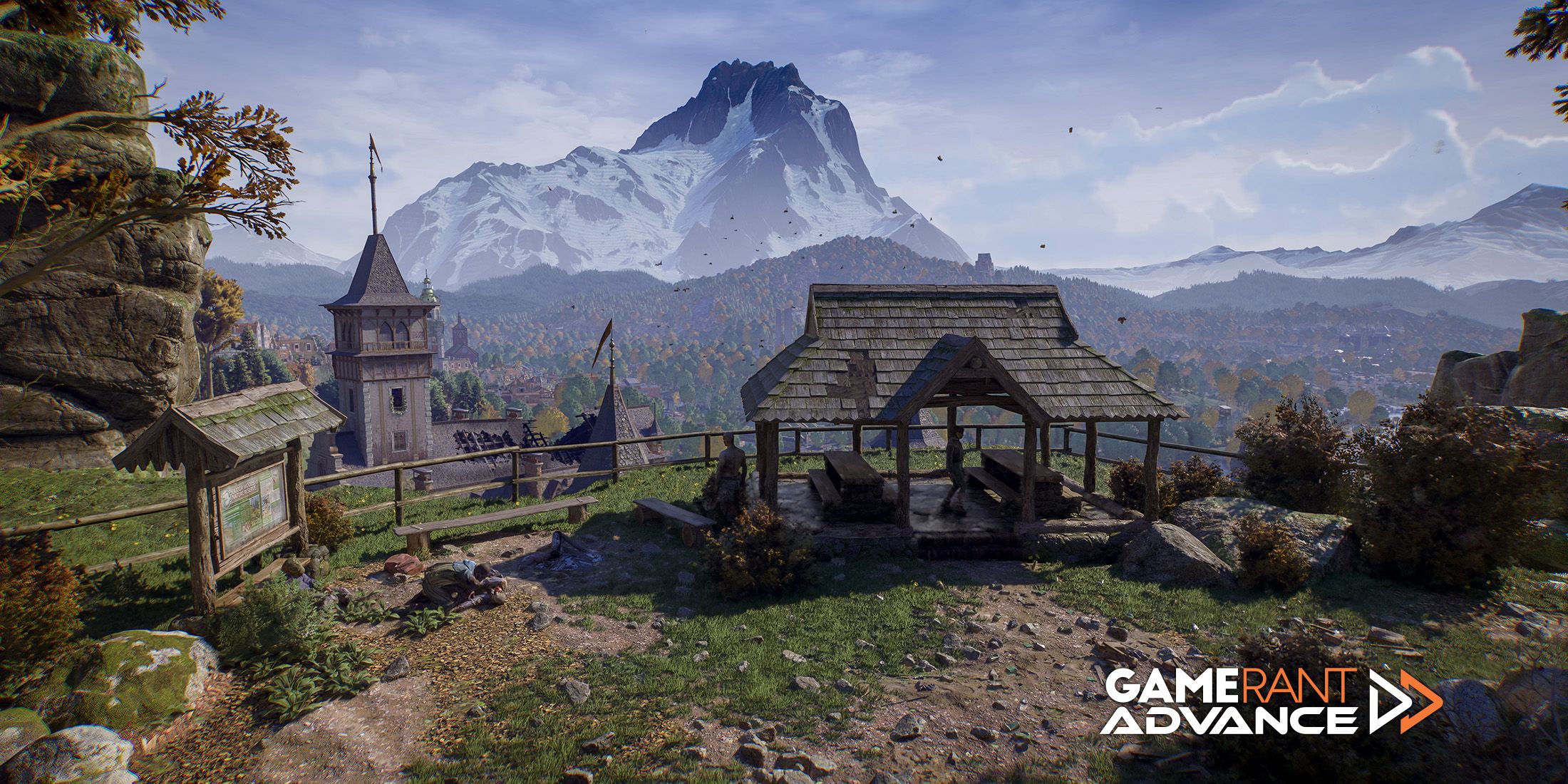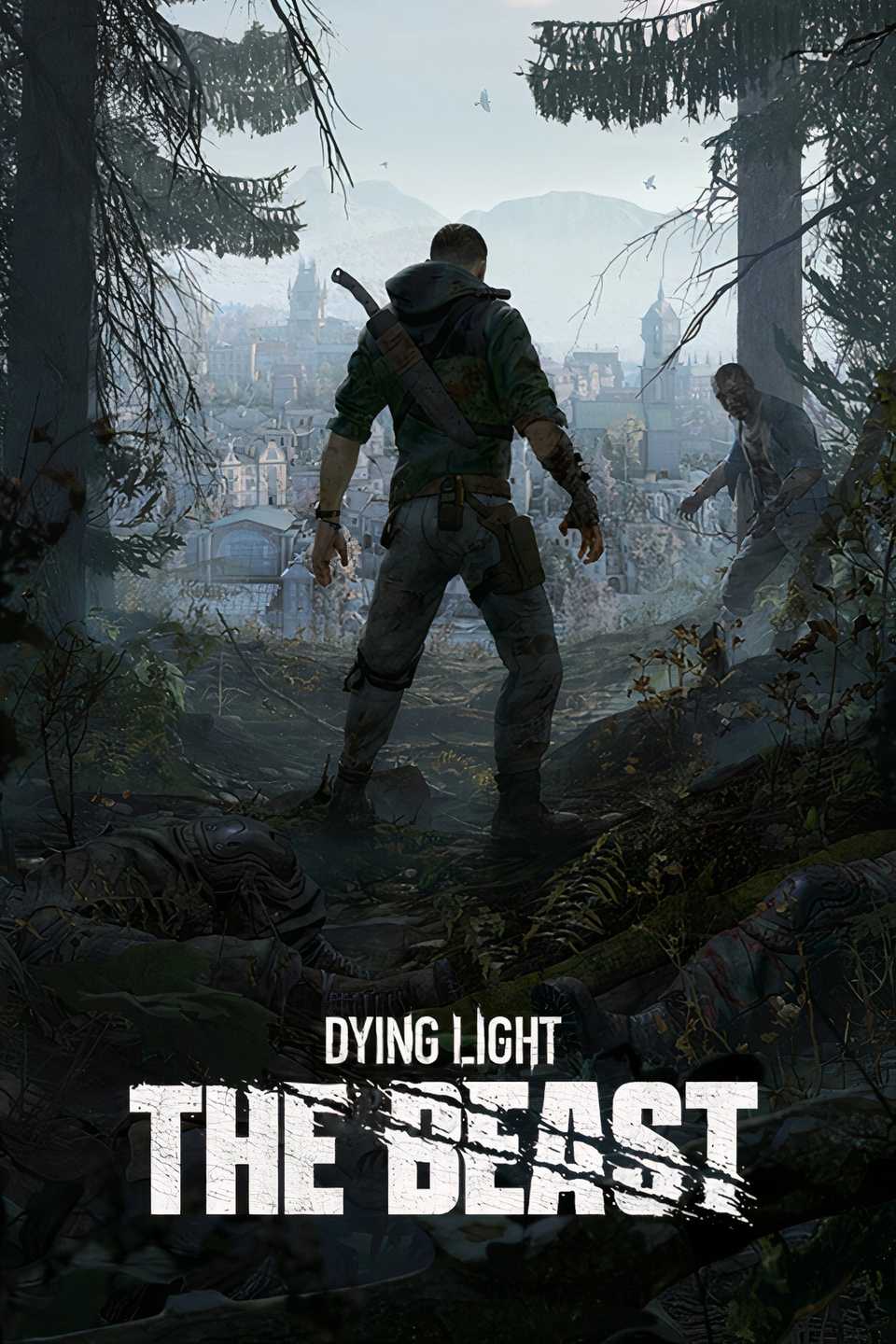
Dying Light: The Beast introduces players to Castor Woods, which is described by the Techland team as “rich, alive, and full of different places to explore.” Once a bustling tourist town, Dying Light: The Beast‘s Castor Woods is now home to a wider variety of zombie and human foes than ever before, including brand-new enemies such as Chimeras. The rich open world is divided into several biomes for players to explore, discover quests and hidden lore, fight zombies and, of course, test their parkour skills in new and exciting ways.
Game Rant spoke with Dying Light: The Beast art director Katarzyna Tarnacka-Polito about the various biomes of Castor Woods, which players can encounter in the game. She revealed that a large amount of inspiration comes from both existing Swiss Alps tourist towns and Polish landmarks, including the Table Mountains National Park. Its sloping terrain and mix of forest, swamp, and town biomes provide a stark contrast to Dying Light 2: Stay Human‘s urban setting, offering new parkour and combat challenges for players.
Dying Light: The Beast’s Castor Woods Is Split Into Several Biomes
“It was once a lively, busy place, surrounded by beautiful mountains, forests, and a stunning national park,” said Tarnacka-Polito of Castor Woods. “People used to come here to relax, go skiing, and enjoy nature.” While Castor Woods isn’t fully devoid of human life, the once-bustling tourist town is now a shell of its former self. The Techland team hinted that Kyle Crane will be able to encounter several other survivors in Dying Light: The Beast, not to mention the antagonistic forces led by the mysterious Baron.
Tarnacka-Polito listed the variety of biomes that appear in Dying Light: The Beast: the town, a national park, an industrial park, Castor Woods’ partially flooded farmlands, the deserted lodgings once belonging to factory workers, and a historical villa district that was home to the Woods’ wealthier residents. Each biome of the game will feature different elements that will challenge the Dying Light: The Beast player’s parkour skills, such as the dense forestation of the national park or the swamp-like flooding in the farmlands.
Each Biome Will Feature Distinctive Elements And Characteristics
Speaking in more depth about each biome, Tarnack-Polito provided a few highlights of what players can potentially expect to encounter while exploring the many biomes of Dying Light: The Beast’s Castor Woods:
The Tourist Town
“The town is built on sloping terrain, which makes it very different from the areas of Villedor in Dying Light 2: Stay Human. We wanted to make sure the environment feels dense and diverse.”
The National Park
“This vast, forested area is filled with scenic viewpoints and rock formations inspired by the – among others – real-world Table Mountains National Park in Poland. You’ll come across mountain lodges, picnic areas, and the park rangers’ headquarters. I highly recommend taking a moment to read the information boards you’ll come across – they offer a lot of insight you don’t want to miss.”
The Industrial Park
“Several factories once operated here, providing jobs to the local community. Even though some were abandoned before the pandemic, buildings – silos, warehouses, and production halls – still stand. They offer fantastic opportunities for exploration and looting.”
The Workers’ District
“Like many towns built around the turn of the 20th century near factories, worker housing was constructed nearby – simple residential blocks surrounded by playgrounds, grocery stores, and green spaces for recreation.”
The Farmlands
“Another key area of Castor Woods is the farmlands, inspired by traditional European countryside. Here, residents produced and sold local specialties to visiting tourists. Although this area is now partially flooded, you can still see how carefully crafted each farmhouse and its surroundings are.”
The Historic Villa District
“There is also the historic villa district with its unique architecture, where Castor Woods’ wealthier residents lived. Players will find a few hotels and guesthouses there. Every home has a unique garden and small details that hint at who used to live there, which was a lot of fun to create.”
There’s More to Castor Woods Than Meets the Eye
Tarnacka-Polito also hinted that each biome will contain more than just opportunities for players to show off their parkour skills. Those who thoroughly explore can learn more about the history of Castor Woods, including the Baron’s old-money family and their control and development of the area. Places players can find lore and information include, but are not limited to, the signposts in the national park area, the unique gardens of the historic district, and the interior of the abandoned silos and warehouses where factory workers once toiled.
Castor Woods is a sinister and danger-filled place, drawing inspiration from the world of David Lynch’s Twin Peaks. But it’s filled with more than just zombies to fight. There are plenty of secrets for Dying Light: The Beast players to uncover as they thoroughly explore each of the many unique biomes this game’s open world map has to offer.

Dying Light: The Beast
- Released
-
September 19, 2025
- ESRB
-
M For Mature 17+ // Blood and Gore, Intense Violence, Language, Use of Drugs
- Multiplayer
-
Online Co-Op
- Franchise
-
Dying Light
- PC Release Date
-
September 19, 2025
- Xbox Series X|S Release Date
-
September 19, 2025









